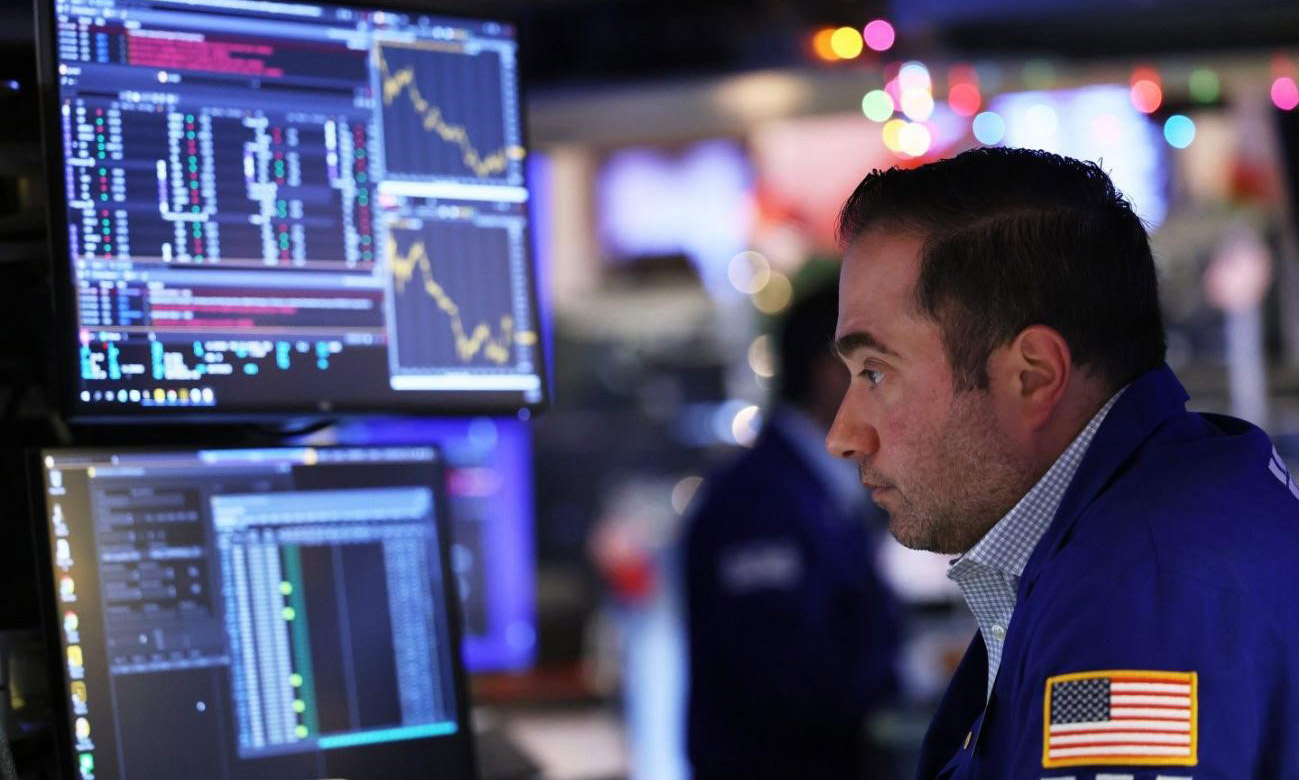
在充满不确定的时期,我们跟客户交流时主要讨论宏观经济和地缘政治不利以及对投资组合可能造成的影响。
当前基本判断仍然是,明年美国经济不会出现衰退。即使衰退,由于美国基本面强劲应该也相对温和。
近期市场最担心的是美国通胀和未来利率走势,不过俄乌冲突等国际因素也对投资者情绪形成打压。
不过,我们对1945年股票市场深入分析后发现,历史经验显示市场波动时期最适合投资者继续投资。
很多客户为更好地应对宏观周期后期面临的种种挑战,对投资组合采取了偏向防御的操作。
当前估值已大幅修整,尤其是成长期科技公司,但有人担心随着终端利率接近15年来高点,久期相对敏感的股票可能进一步蒙受损失。
今年经济下滑之前如果投资者对成长股票配置较多,可以采取投资亏损税收转赢策略,也就是将亏损变现抵消其他收益,从而发挥负回报的价值。
选择保留或谨慎建立成长股票敞口的投资者做法基本上更偏防御,多采取某些策略限制市场进一步下滑时的风险。不少投资者还将此类股票敞口与高于正常水平的现金挂钩。
我们相信投资者应“坚持投资”,谨慎保持股票敞口,主要有两大因素:
• 2008年全球金融危机以来,市场全面反弹往往能实现巨大收益,导致卖出股票时出现巨额税负。
• 把握重新入市的机会出了名的困难,经常会“踏空”股票上涨节奏。熊市之后一年里股票收益中值超过23%。
所以,我们建议投资者避免股权配置大幅调整,转而选择与投资主题(美国地位领先、美元坚挺和资产负债表健康)契合的优质公司。
投资者应关注稳健且稳定的利润,加上持久长期的现金流,尤其是外界预测盈利能力有限的早期公司。
美联储持续的加息周期支撑美元强势,投资者如果要投资大部分收入来自国外的公司时应保持谨慎,因为计入收益时可能因货币汇率蒙受损失。
从地域来看,我们仍然相信美国表现将优于其他发达国家或新兴经济体。背后有长期结构性因素支撑,如劳动生产率更高、每股收益增长更快、人口结构有利以及创新能力更强等。
今年利率大幅上升后,我们发现投资者对现金管理和短期固收产品重新燃起兴趣。执行策略从简单的隔夜和定期存款到短期公司债和管理市政债投资组合均有涉及。由于本公司多数客户都要纳税,市政债策略具有的税收优势可提升收益。
如果客户寻求更多久期敞口,可考虑在企业投资级产品里选择机会。我们对衰退情境中高收益债券的下行风险持谨慎态度,但从基本盘来看2023年仍有望保持正收益。
总体来说,我们的观点是市场波动能创造不错的投资机会,以防2023年真出现经济衰退。据我们估计,衰退的几率从今年早些时候的20-25%已跃升到现在的一半一半。
2022年显然是充满挑战的一年,但从长期角度界定今年的波动性非常重要。根据我们对彭博数据的分析,2009年3月全球金融危机后的低点以来,美国股市投资者在标准普尔500指数上获得的回报超过675%。尽管今年出现动荡,整体表现仍然不俗,且存在一定上升空间。
投资者最好坚持投资,熬过艰难时光,等好日子来临时大赚一笔。
萨拉·奈森-塔拉哈诺是私人财富管理资本市场和高盛Apex家族办公室全球负责人。
Fortune.com上评论文章中表达的观点,仅代表作者本人的观点,并不代表《财富》杂志的观点和立场。(财富中文网)
译者:梁宇
审校:夏林
2023年,投资者不得不面对充满不确定性的市场。
在充满不确定的时期,我们跟客户交流时主要讨论宏观经济和地缘政治不利以及对投资组合可能造成的影响。
当前基本判断仍然是,明年美国经济不会出现衰退。即使衰退,由于美国基本面强劲应该也相对温和。
近期市场最担心的是美国通胀和未来利率走势,不过俄乌冲突等国际因素也对投资者情绪形成打压。
不过,我们对1945年股票市场深入分析后发现,历史经验显示市场波动时期最适合投资者继续投资。
很多客户为更好地应对宏观周期后期面临的种种挑战,对投资组合采取了偏向防御的操作。
当前估值已大幅修整,尤其是成长期科技公司,但有人担心随着终端利率接近15年来高点,久期相对敏感的股票可能进一步蒙受损失。
今年经济下滑之前如果投资者对成长股票配置较多,可以采取投资亏损税收转赢策略,也就是将亏损变现抵消其他收益,从而发挥负回报的价值。
选择保留或谨慎建立成长股票敞口的投资者做法基本上更偏防御,多采取某些策略限制市场进一步下滑时的风险。不少投资者还将此类股票敞口与高于正常水平的现金挂钩。
我们相信投资者应“坚持投资”,谨慎保持股票敞口,主要有两大因素:
• 2008年全球金融危机以来,市场全面反弹往往能实现巨大收益,导致卖出股票时出现巨额税负。
• 把握重新入市的机会出了名的困难,经常会“踏空”股票上涨节奏。熊市之后一年里股票收益中值超过23%。
所以,我们建议投资者避免股权配置大幅调整,转而选择与投资主题(美国地位领先、美元坚挺和资产负债表健康)契合的优质公司。
投资者应关注稳健且稳定的利润,加上持久长期的现金流,尤其是外界预测盈利能力有限的早期公司。
美联储持续的加息周期支撑美元强势,投资者如果要投资大部分收入来自国外的公司时应保持谨慎,因为计入收益时可能因货币汇率蒙受损失。
从地域来看,我们仍然相信美国表现将优于其他发达国家或新兴经济体。背后有长期结构性因素支撑,如劳动生产率更高、每股收益增长更快、人口结构有利以及创新能力更强等。
今年利率大幅上升后,我们发现投资者对现金管理和短期固收产品重新燃起兴趣。执行策略从简单的隔夜和定期存款到短期公司债和管理市政债投资组合均有涉及。由于本公司多数客户都要纳税,市政债策略具有的税收优势可提升收益。
如果客户寻求更多久期敞口,可考虑在企业投资级产品里选择机会。我们对衰退情境中高收益债券的下行风险持谨慎态度,但从基本盘来看2023年仍有望保持正收益。
总体来说,我们的观点是市场波动能创造不错的投资机会,以防2023年真出现经济衰退。据我们估计,衰退的几率从今年早些时候的20-25%已跃升到现在的一半一半。
2022年显然是充满挑战的一年,但从长期角度界定今年的波动性非常重要。根据我们对彭博数据的分析,2009年3月全球金融危机后的低点以来,美国股市投资者在标准普尔500指数上获得的回报超过675%。尽管今年出现动荡,整体表现仍然不俗,且存在一定上升空间。
投资者最好坚持投资,熬过艰难时光,等好日子来临时大赚一笔。
萨拉·奈森-塔拉哈诺是私人财富管理资本市场和高盛Apex家族办公室全球负责人。
Fortune.com上评论文章中表达的观点,仅代表作者本人的观点,并不代表《财富》杂志的观点和立场。(财富中文网)
译者:梁宇
审校:夏林
Investors will have to navigate uncertain markets in 2023.
MICHAEL M. SANTIAGO—GETTY IMAGES
In these uncertain times, the conversations we are having with our clients most often focus on macroeconomic and geopolitical headwinds and likely portfolio impacts.
Our base case remains that the U.S. economy will avoid a recession next year. Even if a recession were to take place, it should be relatively mild given robust underlying U.S. fundamentals.
While domestic inflation and the forward path of interest rates continue to be the most obvious near-term concerns, international factors such as the Russia-Ukraine conflict and China’s ongoing regional assertiveness are also weighing on investor sentiment.
However, based on our analysis of equity market conditions going back to 1945, history suggests that during periods of market volatility, investors are best placed to stay the course and remain invested.
Many clients have applied a defensive value-oriented tilt to their portfolios to better withstand the challenging late-cycle macroeconomic headwinds which investors currently face.
While valuations have substantially reset, particularly in growth-stage technology companies, there is apprehension that duration-sensitive stocks could suffer further losses with terminal interest rates nearing their highest levels in 15 years.
Investors who were over-indexed to growth equity ahead of this year’s downturn have been able to use negative returns through tax-loss harvesting strategies that monetize losses to offset other gains.
Conversely, investors choosing to retain or cautiously build exposure to growth equity names are mostly doing so in a more defensive way by using strategies that limit downside risk should markets slide further. Many are also coupling this equity exposure with larger-than-normal cash allocations.
Our conviction that investors should “stay the course” and cautiously maintain equity exposure is driven by two principal factors:
• Gains achieved in the broad market rally since the 2008 Global Financial Crisis are often substantial, leading to large tax liabilities when stocks are sold.
• Timing when to re-enter the market is notoriously difficult and often entails “missing out” on meaningful equity upside. The median equity gain in the year following past bear markets is more than 23%.
Instead, we advise that investors should avoid substantial equity allocation shifts and lean towards quality companies that fit with our key investing themes: U.S. preeminence, dollar strength, and healthy balance sheets.
Investors should focus on robust and stable margin profiles, coupled with durable, long-term cashflow generation, especially over earlier-stage companies with limited foresight to profitability.
With the Fed’s ongoing hiking cycle underpinning dollar strength, investors should exercise caution when investing in companies that source a large proportion of their revenues from abroad, creating possible currency exchange disadvantages when reporting earnings.
Geographically, we continue to believe the U.S. will fare better than other developed or emerging economies. This is underpinned by long-term structural factors such as higher labor productivity, greater EPS growth, favorable demographics, and greater innovation.
After this year’s sharp rise in interest rates, we have seen renewed investor interest in cash management and short-duration fixed income. Implementation strategies range from simple overnight and term deposits to short-duration corporate bonds and managed municipal bond portfolios. Since most of our clients are taxable investors, municipal band strategies also have tax-advantaged yield enhancement characteristics.
Clients looking for more duration exposure should consider selective opportunities in the corporate investment-grade space. And while we are cautious about downside risks to high-yield bonds in a recession scenario, our base case still implies positive returns for 2023.
On balance, our view is that market volatility can create interesting investment opportunities against the real possibility of a recession in 2023– a probability that jumped from 20-25% earlier this year to more even odds today, according to our estimates.
While 2022 has clearly been a challenging year, it is important to frame this year’s volatility in a longer-term context. Since the post-GFC lows in March 2009, U.S. equity investors have enjoyed a more than 675% return in the S&P 500, according to our analysis of Bloomberg data. Despite this year’s turbulence, that is a remarkable run that has moderate room for further upside.
Investors are better off staying in and riding out the tough days to reap the benefit of the good ones.
Sara Naison-Tarajano is global head of private wealth management capital markets and Goldman Sachs Apex Family Office.
The opinions expressed in Fortune.com commentary pieces are solely the views of their authors and do not necessarily reflect the opinions and beliefs of Fortune.






